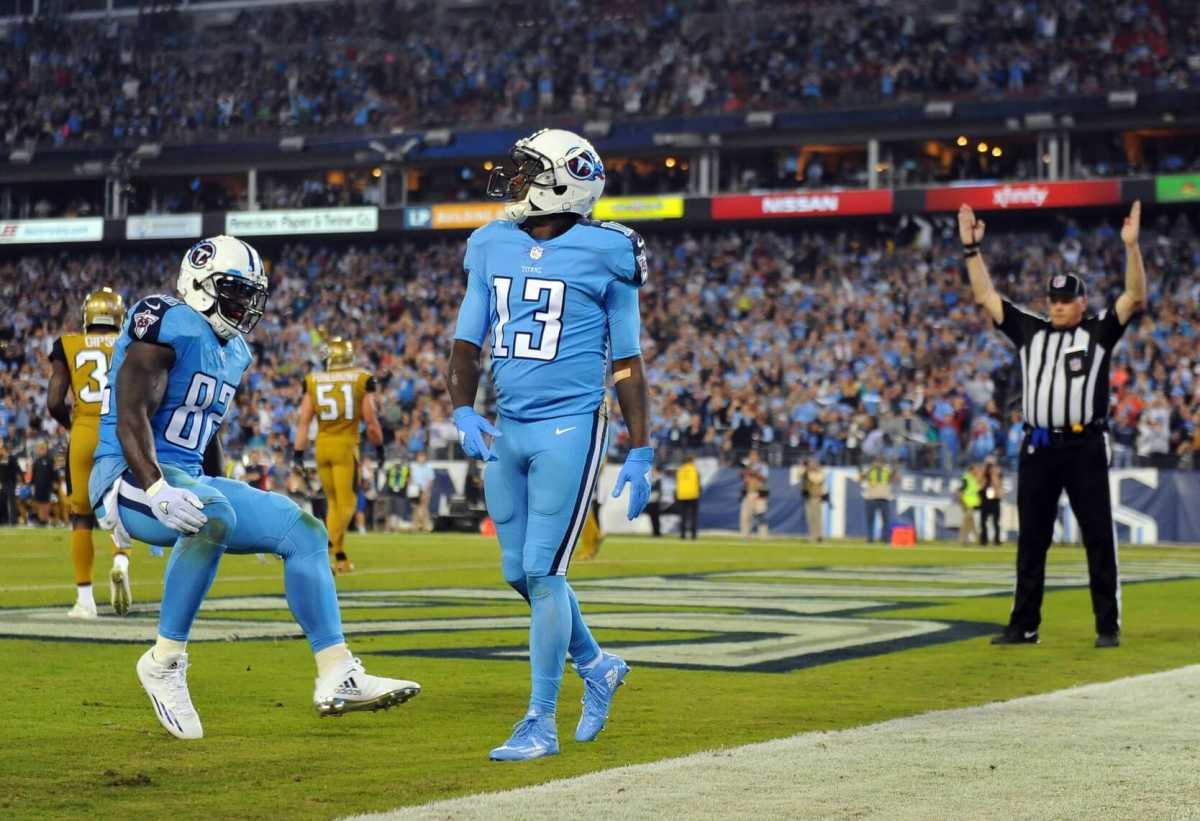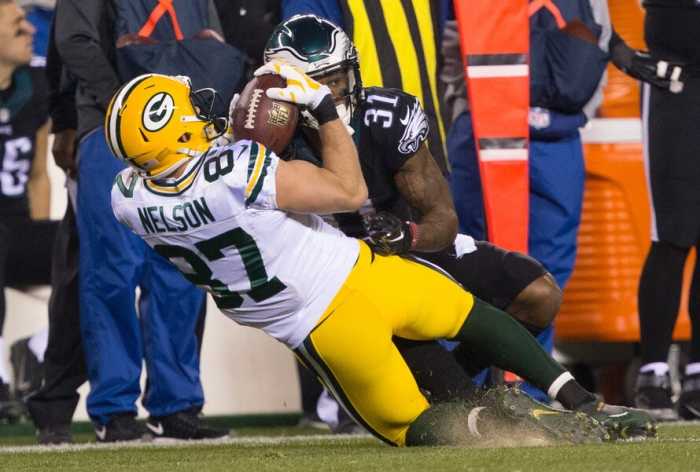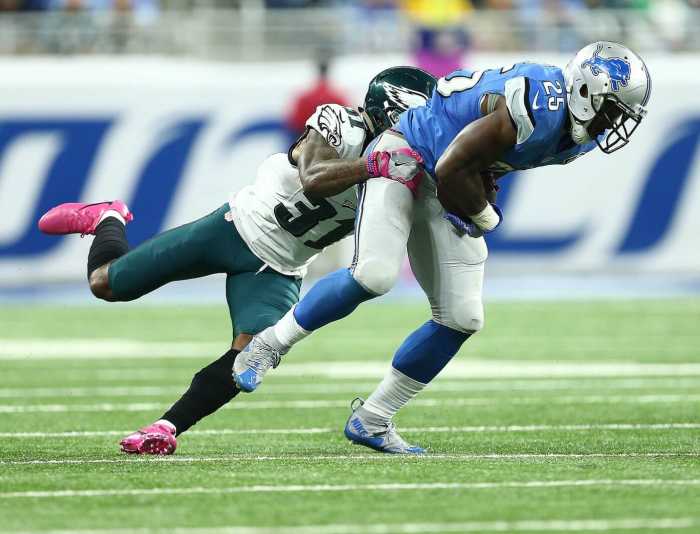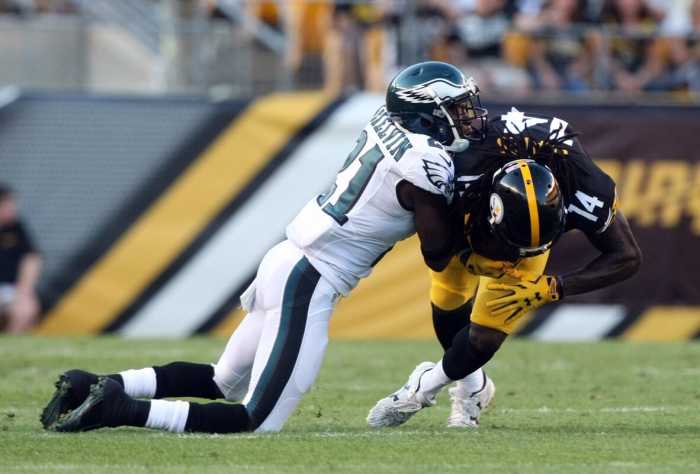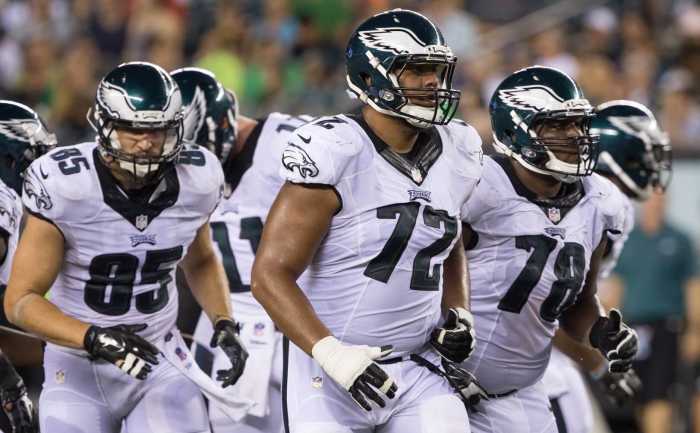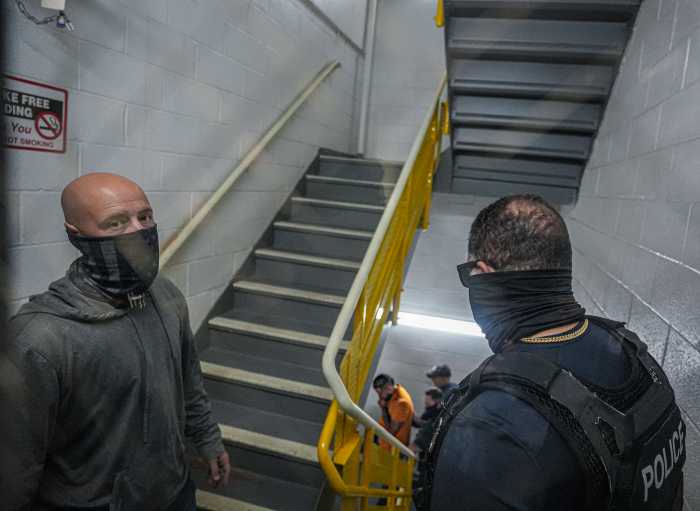It’s time to once again step inside the Free Agency Film Room. This time, we’re taking a closer look at Titans wide receiver, Kendall Wright. Drafted by the team in the first round back in 2012, Wright flourished in 2013, receiving for 1,079 yards and 2 touchdowns on 94 receptions. However since first arriving with the team four season’s ago, the amount of attention received has steadily decreased. After 140 targets in 2013, Wright saw just 43 passes thrown his way in 2016. This has prompted Wright and a team that has changed drastically since his arrival to cut ties, with the 27-year old all but confirming his departure.
Kendall Wright: 'I am not a part of the 2017 Tennessee Titans' https://t.co/3W2Nnip6NY pic.twitter.com/NdBzsdzHtl
— Around The NFL (@AroundTheNFL) January 3, 2017
The question is, should the Eagles pursue a receiver who has flashed plenty during his 3,244 yards worth of receptions so far? Wright doesn’t have the appeal of Kenny Stills, but he may come without the hefty price tag. To break it down, we’ll be using the same criteria used to analyze the play of Stills.
Getting off the line:
Wright seems to be the Jekyll and Hyde of wide receivers when it comes to release..and which persona you see, depends on the Defensive formation. If Wright is lining up in the slot against zonal looks, he’s able to accelerate quickly and manipulate corners into falling away. If he faces press situations, he struggles to make anything happen after the initial bump and often ends up jammed at the line.
In this play against the Browns, Wright does a great job of releasing well, pushing off the corner to cut inside and make a tough 26-yard reception. It’s a rare showing of strength, but one that’s certainly encouraging.
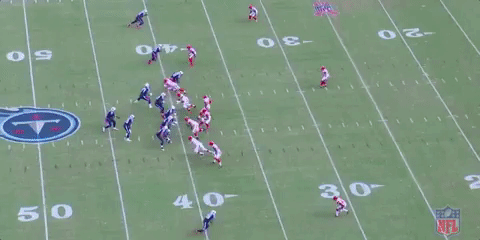
If Wright can avoid a bump at the Line, he is able to come across the middle and get into the stem of his route with ease. Here for instance the cut is so quick that his first step is angling his body to the inside, making it a foot race between himself and the corner. What stands out here is Wright’s natural instinct to cut across the face of the man pressing him, creating that extra cushion of space. We’ll get into that a lot more later, but these are the sorts of plays that Wright was reduced to in 2016. The emergence of Tajae Sharpe and Rishard Matthews really didn’t help his growth and Wright was simply used on drag-routes and play-action looks more often than not.
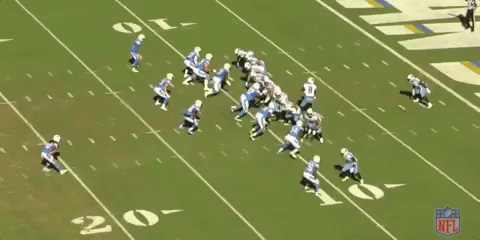
The key difference between the above play and the one below however, was contact. If Wright does get bumped at the line, as aforementioned it’s extremely rare to see him recover and push past his man. Lining up in the slot here, Wright attempts to make a move at the line but is forced to push inside. The push wasn’t hard enough to create any kind of separation and that excess time spent trying to force the extra step, resulted in an incompletion.
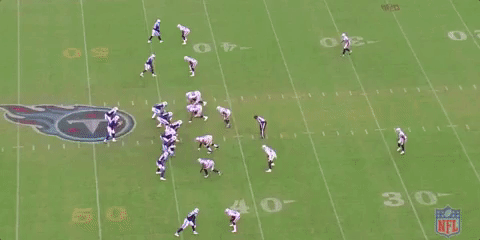
Again, after motioning to the slot on this play, Wright fails to get any kind of push at the line and is blanketed from the moment that contact was initially made. The result was Mariota looking straight to the endzone after a great, contrasting route opened a massive window for Mariota to throw into.
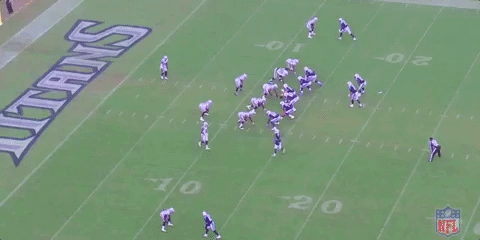
The Eagles have plenty of problems when it comes to separation as it is. Given that Wright spent most of this season working on shorter and intimidate routes, his inability to win the battle at the line of scrimmage could potentially hinder his other strengths if the Eagles were to insist on using him in those same situations.
The stem:
Where Wright really begins to shine however is during the middle of the route. He doesn’t quite have the speed (4.61 40-yard dash time) to emerge as a solid deep threat, but on out routes and posts where he’s tasked with changing direction, Wright shines.
Wright has plenty of space to worth with from the Slot on this play and goes to challenge the safety, forcing him to change direction and adjust to the potential deep route. The moment in which that change occurs however, Wright breaking inside smoothly and creating a huge window over the middle for Mariota.
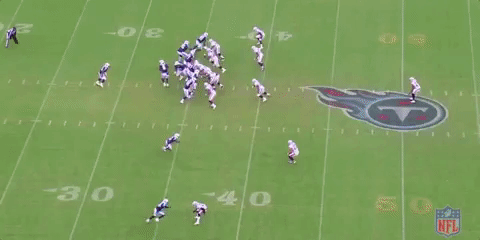
The same can be seen in this play against the Colts last year. Wright sees the Cover-3 and as opposed to cutting inside over the middle, jukes past the corner and then breaks over the top. Because that corner is keeping his eyes on the quarterback, it gives Wright a thick running lane to press into. The break in the route again is done so cleanly and because of the space gained, he’s able to haul in the grab.

There’s maybe no better example of his ability to stay strong in the Heart of the route, than this catch against the Browns. With both a corner and a safety rendering him “off-limits”, Wright, suddenly stops and rolls outside, opening up the only throwing lane for Mariota on the play for a brief period.
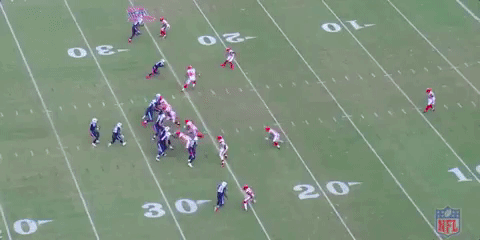
After motioning to the slot on the below play, Wright is able to get a head start on his route and really punish the opposing corner. Wright breaks to the outside to draw the corner toward him before cutting across his face back inward to create heaps of separation. The problem is that Wright lacks deep speed and this allowed a quick recovery and a brilliant play from the defensive back.
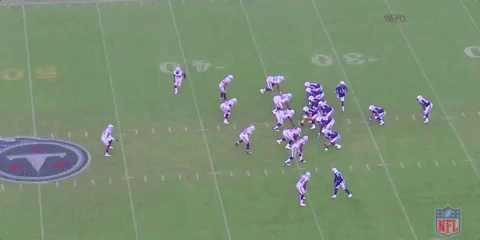
When it comes to maintaining a route, Wright has the strength to stay on-course and the agility to break with ease and create separation. He doesn’t have the speed to become a perennial deep threat or open up the passing game like Stills, but his instincts and lateral quickness make him a potential nightmare in shorter routes, if he can get off the line.
Separation:
If Wright is able to get off the line cleanly, he’s extremely difficult to eliminate from the passing game. One of his main strengths is the intelligent football that he plays. On this slant route against the Packers, Wright starts the play slowly before waiting for Sharpe to come across him and distract the Safety. Wright picks his moment then flips his hips and drives in toward the endzone. It’s this kind of methodical play that can make up for a lack of speed.

In Thursday Night Football against the Jags, Wright was able to sneak in behind the Safeties for a big score. At first, it may seem like blown coverage or a simple deep route. When you look at it closer, you’re able to see the shiftiness that Wright possesses, again breaking in the route after the safety had began retreating, giving him a one-on-one shot against the second safety who was watching the eyes of the sophomore quarterback.
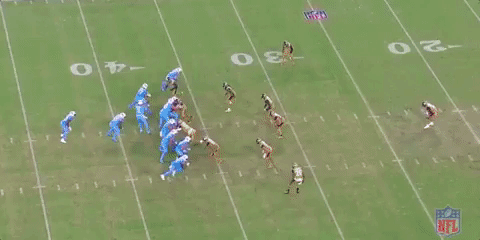
Separation is hard to gauge with Kendall Wright, because he’s proven time and time again that he can achieve it. But in the last two season’s he’s been marginalized into roles that don’t particularly suit his style. He still flashes it from time to time, but it’s become an underlying strength that just isn’t as prominent as it is in the games of Sharpe and Robinson.
Catch Radius:
If there’s one thing that Wright does well, it’s catch the ball. As simple as that sounds, for the Eagles it’s a factor of genuine importance. With a catch rate of 67% this year, Wright has continued to grow as a reliable possession receiver.
Wright does a great job on this route of shrugging off contact, turning on a deep curl and making a catch. With a corner glued to him and a linebacker leaping across in front attempting to make an interception, the mental awareness and concentration of Wright were once again on show.
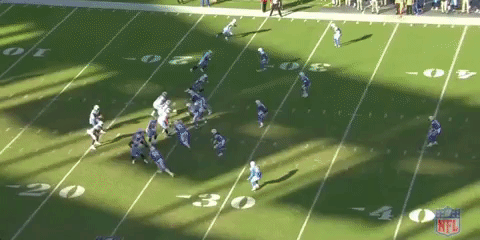
Despite being hampered in press coverage here out of the slot, Wright turns his back to the corner for Mariota to place the ball only where his receiver can get it. Wright leaps up to make the play, coming down with the ball and showing that even though he may be regarded as undersized by some, he can still make plays like the Giants.
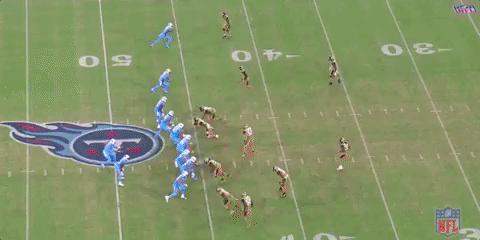
There may be no greater play to showcase the catch radius of Kendall Wright than this leaping touchdown catch against the Browns. This does tie in very neatly with “Effort”, but whether its positioning his body to catch a ball thrown behind him, or simply extending to try and help make an uncatchable pass redeemable, Wright’s shorter wingspan and smaller hands don’t take away from the radius around the receiver.
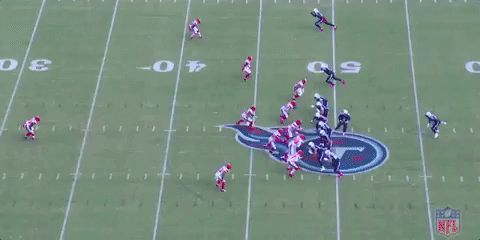
Adjustment:
Wright does a great job of adjusting his routes in order to help the quarterback. Whether it was Jake Locker or Marcus Mariota, Wright’s great instincts help out massively when it comes to opening up the field.
Mariota is forced to roll outside the pocket on this play. Scrambling to the outside of the field, there’s no receiver open after the basic routes had concluded. But Wright spins off his corner for play of huge potential over the middle, which is more than any other receiver was able to do. The play fell incomplete after a stunning deflection, but the intuitiveness to spin off near the sideline and cut back across the middle is impressive.
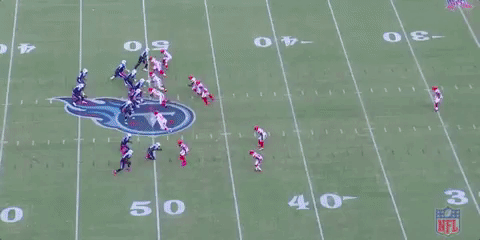
There aren’t many situations where Wright is in a position where he needs to make these adjustments, because of the simplicity of the routes given, but knowing that he can absolutely extend a play is reassuring.
YAC & Effort:
One of Wright’s strongest assets is his ability to pick up yards after the catch. It’s common to see him appear panicky and scramble back and forth looking for holes up the field, but it’s the willingness to do so that stands out. This is why I’ve combined the final two categories into one. Wright averaged just 4.3 yards after the catch this season, but when you look at what he does on a regular basis, it almost doesn’t matter.
After making a catch over the middle, Wright shifts to the outside to try and catch a block and secure a running lane. When the attempt was unsuccessful, he darted back inward and still looked for the hole. This was quite reminiscent of Byron Marshall’s NFL debut as he almost tried to do too much with the ball..but I’d rather see a player try too hard than not at all.
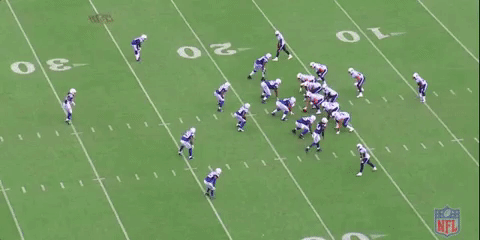
The same effort levels can be seen here. Wright secures a pass thrown a little high before immediately turning and driving towards midfield. It’s that drive to move the ball forward on every reception that the Eagles would most benefit from. Wright has the same kind of determination possessed by Jordan Matthews when the ball is in his hands. But that’s the problem..when it’s in his hands.
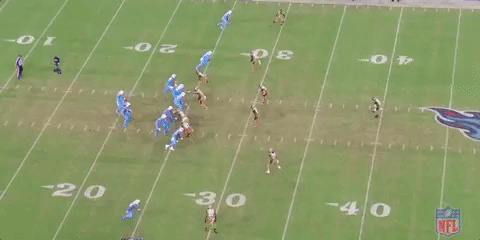
If we throwback to Marcus Mariota’s first NFL touchdown pass, we see much of the same. It would have been easy for Wright to drive for the sideline when being closed in, but a quick cut after the reception paved him just enough room to push all the way for the touchdown.

Although his YAC may not be incredibly impressive, the effort is still there. But if the ball isn’t thrown his way, Wright has a tendency to fall to the same flaws as former teammate Dorial Green-Beckham.
Working out of the slot on this route, Wright is running much slower than those around him. It almost looks as though he’s taken his Foot off the Gas..and that’s exactly what we see from DGB. If the hot-route belongs to number 13, we see a driven play and effort to make the catch. If he’s not the primary target, Wright sometimes slips under the cracks and that effort dips.
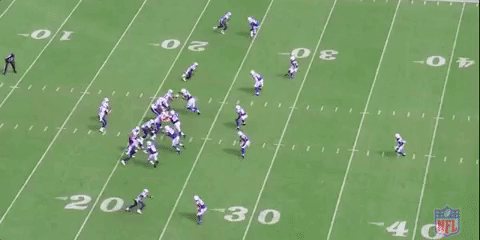
Conclusion:
When all is said and done, the Eagles need to improve their wide receiver corps. Improve being the word. As much as Wright has flashed in that 1,079 yard season and the big catches since, his inability to separate or win the battle at the line are only adding more of the same problems to the Eagles roster. Wright, in my opinion is what the ceiling of Nelson Agholor would realistically be for next season if he was to play in the slot. A move outside for Jordan Matthews would allow Agholor to play where he thrived at USC and if the Eagles can bring in a deep threat, it opens things up massively.
Wright, has the same flaws as the current Eagles receivers and the same strengths. The potential is absolutely there and he’s already proven that he can be a number one receiver in this league. But he’s not the right guy to take on that role in the City of Brotherly Love.
Mandatory Credit: Christopher Hanewinckel-USA TODAY Sports

